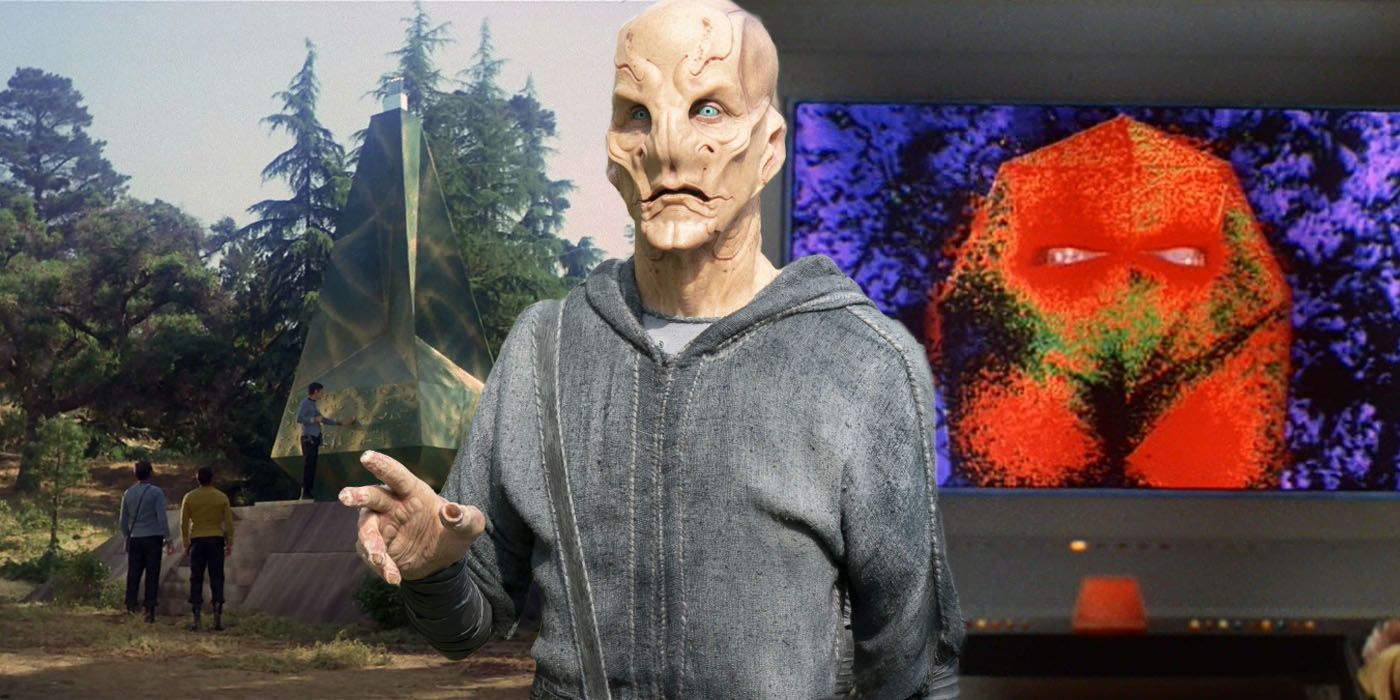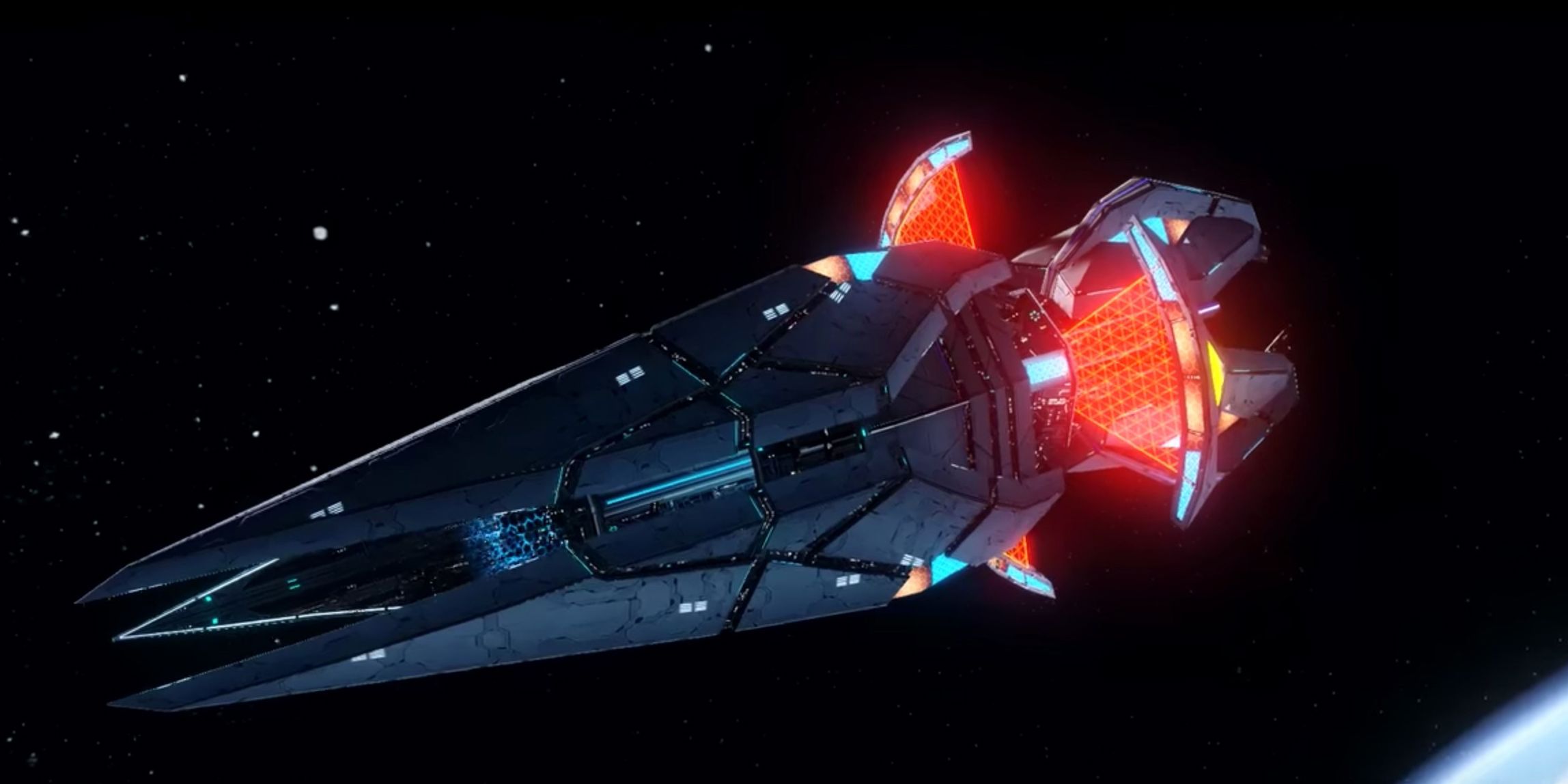Star Trek: Discovery’s recent episode “The Sound of Thunder” featured a few old school design nods to Star Trek: The Original Series. While the show hasn’t shied away from invoking previous canon (or abandoning it, depending on whom who you ask), these were more subtle references than say, the Enterprise showing up.
Discovery gave itself an interesting challenge when it came to design by setting itself only a decade before TOS. Playing around in Star Trek’s past isn’t unprecedented or necessarily even problematic, given how little the franchise has explored the time period between the 21st century and the Original Series’ 23rd. It was precisely because of that blank chapter that Enterprise could afford to take the creative license it did when fleshing out the early days of Starfleet and the Federation - it went far enough back in time that it wasn’t beholden to any precedent. Discovery, by contrast, has had to justify every single design change - from the uniforms to the ships to the Klingons - to eagle-eyed fans. But for every adjustment or departure from what we’ve seen on Star Trek before, Discovery usually drops in a wink or a nod to its predecessors, too - three times in this episode alone, all related to the Ba’ul.
Related: Star Trek: Discovery Corrects Season 1's Worst Moment
The Ba’ul’s ships, technology and physiology were all hugely reminiscent of older episodes of Star Trek. The predator species that “shares” Kaminar with the Kelpiens was finally introduced this week and were revealed to be isolationist creatures, just as driven by fear as Saru once was, but significantly more technologically advanced. Instead of favoring the more aerodynamic, manta-like designs we see in The Next Generation era and beyond, the Ba’ul drive hard-angled, vertically oriented ships that strongly resemble Tholian vessels we first see in “The Tholian Web” (though the Tholian ships were horizontally-oriented). The pylons they use to help perpetuate the Great Balance (a.k.a. their systematic slaughter of Kelpiens) also look similar to obelisks used by a race called the Preservers in the TOS episode “The Paradise Syndrome.” The Preservers were an ancient race of kind (if nosy) aliens who traveled the galaxy rescuing cultures in danger of extinction on their home planets and transporting them to new worlds where they could survive. The obelisks they left behind served as asteroid deflectors and were maintained by one chosen member of each race, who was instructed to pass down the knowledge of its operation from father to son.
What’s interesting about these visual cues is that they both connect to episodes of the Original Series that deal with similar themes found in “The Sound of Thunder.” Like the Ba’ul, the Tholians are aggressively isolationist - any entry into their space is considered an act of extreme aggression and they are characteristically uninterested in any kind of diplomacy. That’s essentially how the Ba’ul react to Pike’s “knock at the door” when the Discovery arrives at Kaminar. They’re also one of the most alien-looking alien races in the Star Trek canon, something else they have in common with the faceless, almost featureless Ba’ul. There’s still very little known about Tholian culture beyond their dislike of outsiders, but if Discovery’s intent was to provide some retroactive insight into them, it could be they suffered catastrophic aggression at the hands of other races and decided being part of a space-faring community wasn’t worth the trouble.
The Preservers’ philosophy is about as diametrically opposed to isolationism as one could get, but drawing comparisons between their technology and what we see on Kaminar speaks to the Prime Directive’s place in this episode. Like the Preservers, the Discovery arrives at Kaminar with a mind to offer assistance, and winds up not only saving the Kelpiens from extermination, but also destroying “the Great Balance” by activating the Vahar’ai in all Kelpiens. Pike raises some concerns that by playing an active role in helping the Kelpiens escape oppression, Starfleet could end up being directly responsible for the eventual extermination of the Ba’ul, but Burnham and Saru maintain the Ba’ul are so far ahead of the Kelpians technologically that there's now a balance of power between the two species.
The Preservers and the Tholians both hearken back to the stark contrast between the Ba'ul and the Federation's philosophies as exhibited during this episode. Whether or not that was intentional on the part of designers or just a symptom of how Discovery naturally echoes its predecessors, it does allow for better insight into Discovery in the context of Star Trek's long history.


